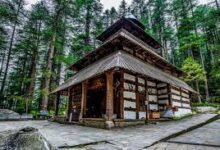Famous Temples in Ujjain: Do visit these famous temples located in Ujjain, know the complete details
Famous Temples in Ujjain: Ujjain is one of those heavenly places where you may feel both alone and engrossed in a state of spirituality that calms your soul. It is situated in the Malwa area of Madhya Pradesh, on the banks of the sacred Shipra river. Every twelve years, the world’s biggest religious gathering, the Maha Kumbh Mela, is held on the banks of the Shipra river in this sacred city, making it one of India’s most famous pilgrimage sites.
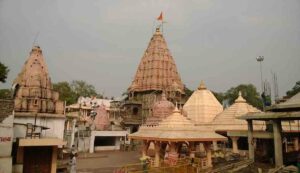
The Mahakal temple, one of Lord Shiva’s twelve Jyotirlingas, and some of the well-known Shakti Peethas are among the more than 100 temples and pilgrimage sites from various periods that can be found in Ujjain, sometimes referred to as the temple city of Madhya Pradesh. The temples of Ujjain will enthrall everyone with their quality and cultural character, regardless of whether they are a history buff, a spiritual admirer, or an architectural enthusiast.
Mahakaleshwar Temple
Perhaps the most well-known temple in Ujjain is the Mahakaleshwar Temple, which is devoted to Lord Shiva and is one of the 12 Jyotirlingas in India. The temple, which is situated by the Shipra River, welcomes millions of people each year.
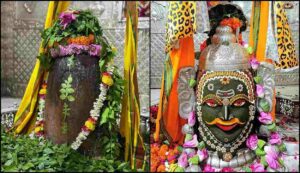
Although the Mahakaleshwar Jyotirlinga here is regarded as Swayambhu, or self-manifested, its orientation is what gives it special significance. The idol of Shiva here is Dakshina Mukhi, which faces south, in contrast to other Jyotirlingas that face north.
The expansive temple complex is decorated with statues of Kartikeya, Mahakaleshwar, Parvati, and Ganesha. You will be overcome with strong feelings and emotions as the temple comes to life, particularly during the Maha Shivaratri festival, when large numbers of devotees swarm the shrine.
Harsiddhi Temple
One of India’s 51 Shakti Peethas, the Shri Harsiddhi Mata Temple, is located not far from the Mahakaleshwar Temple. For followers of Goddess Shakti, who represents divine feminine energy, this shrine is very important.

Hindu legend states that when Lord Vishnu used his Sudarshan Chakra to split Goddess Sati’s body into parts so that Shiva could accept Sati’s death, her elbow fell to the Harsiddhi Temple.
The temple’s devotion to Goddess Harsiddhi is enhanced by its adoration of Goddess Annapurna, Mahasaravati, and Mahalakshmi. In order to get the Goddess’ blessings for wealth and the elimination of barriers, hundreds of devotees come here each year.
Kala Bhairava Temple
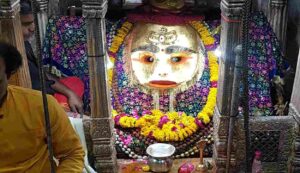
The ferocious and angry manifestation of Lord Shiva, Kaal Bhairav, is the object of devotion at the Shri Kaal Bhairav Temple. Built in the Maratha architectural style, the temple is around 4 kilometers from the city center. Its finest elements are highlighted by elaborate carvings. The black stone statue of Kaal Bhairav, covered with garlands and other decorations, is housed in the temple’s main sanctuary. The city is said to be protected from any malevolent influences by Kaal Bhairav, who is regarded as its protector.
Shri Chaubis Khamba Temple
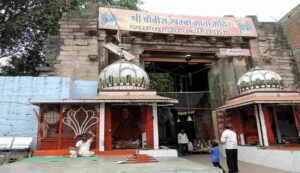
The name of the hilltop Shri Choubis Khamba Temple comes from its distinctive architectural style, which is supported by twenty-four pillars known as Chaubis Khamba. The temple exudes a sense of tranquility and holy energy due to the complex design of its 24 pillars, which provide a sacred area for prayer and meditation. In order to get blessings from Goddess Choubis Khamba, who is said to provide protection, wealth, and respite from hardships, devotees go here. This temple is a well-liked destination for those seeking a tranquil setting for introspection due to its quiet settings and expansive city vistas.
Chintaman Ganesh Temple
The Chintaman Ganesh Temple, devoted to Lord Ganesha, the obstacle-remover, is located not far from the Mahakaleshwar Temple. Known for its exquisitely made image of Lord Ganesha, this ancient temple is one of the most visited sites of devotion in Ujjain. The Chintaman Ganesh Temple has exquisitely carved stone walls and pillars, and its design is simple yet powerful.
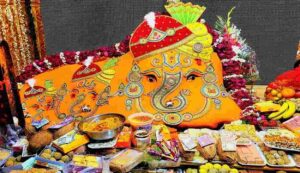
The temple also has the Panchmukhi Hanuman idol, a five-faced representation of Hanuman that represents bravery, strength, dedication, loyalty, and justice, in addition to the Ganesha idol. The spiritual value of this temple is increased by the presence of two of the most potent Hindu deities.
Dwarkadhish Gopal Temple
The Dwarkadhish Gopal Temple, which was constructed in the 1800s, is mostly devoted to Lord Krishna’s infant form, although it also has statues of Lord Shiva, Parvati, and Garuda. The temple has marble minarets and Maratha-style construction.
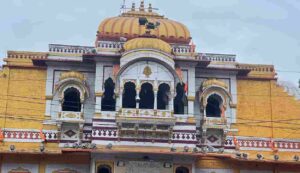
It may surprise you to learn that Mahmud of Ghazni once broke through the temple’s gates in an attempt to eradicate Hinduism and propagate Islam. However, Mahadji Shinde, the Maratha emperor, subsequently repaired them.
Mangalnath Temple
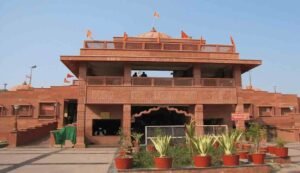
Dedicated to Lord Shiva, the Mangalnath Temple is often connected to Mars. This temple is significant for those who want to balance their astrological influences since, according to Hindu mythology, it is the birthplace of Mars. The temple draws a lot of pilgrims who come here to avoid the bad effects of Mars, and its association with the celestial body adds to its spiritual value.
Gadkalika Temple
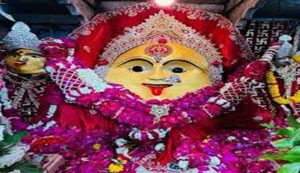
Goddess Gadhkalika, an incarnation of Goddess Kali, is worshipped in the Jai Maa Gadhkalika Mata Mandir, which is situated close to the Shipra River. It is often believed that Goddess Kalika carried out potent rites here to save Ujjain from malevolent spirits. Devotees thus gather here to ask for blessings for wealth, strength, and protection.
Navgraha Shani Temple
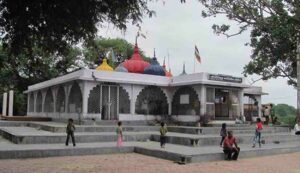
Dedicated to Lord Shani, the planet Saturn, the Navgraha Shani Mandir in Ujjain is quite distinct from other temples. Being the only Shani temple in India where Lord Shani is worshiped as Lord Shiva, this temple is very intriguing.
Thousands of devotees come here to seek solace from Shani’s harmful effects, particularly on Amavasya evenings when everyone congregates to donate oil in an effort to appease Lord Shani and lessen his terrible effects.

